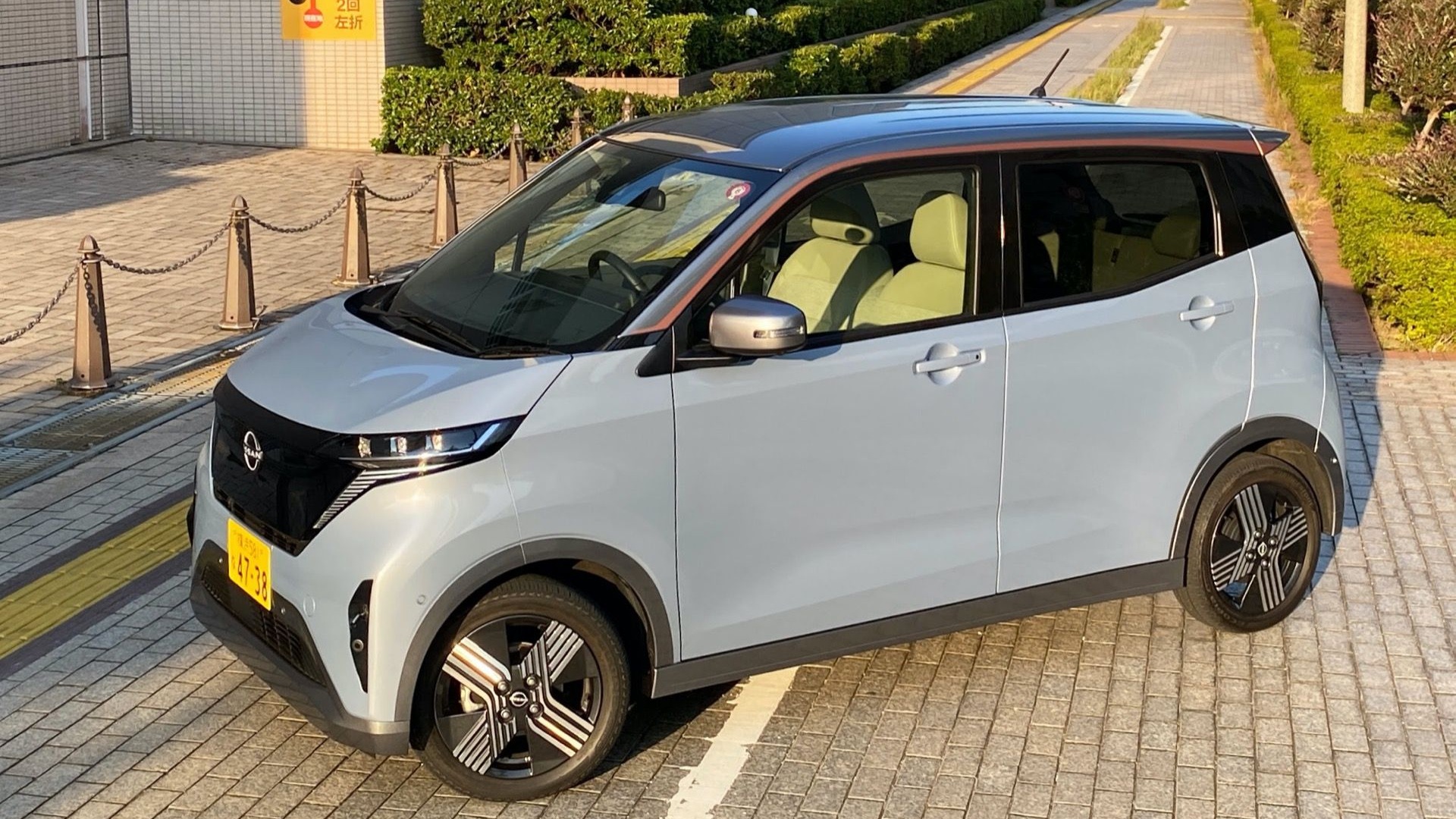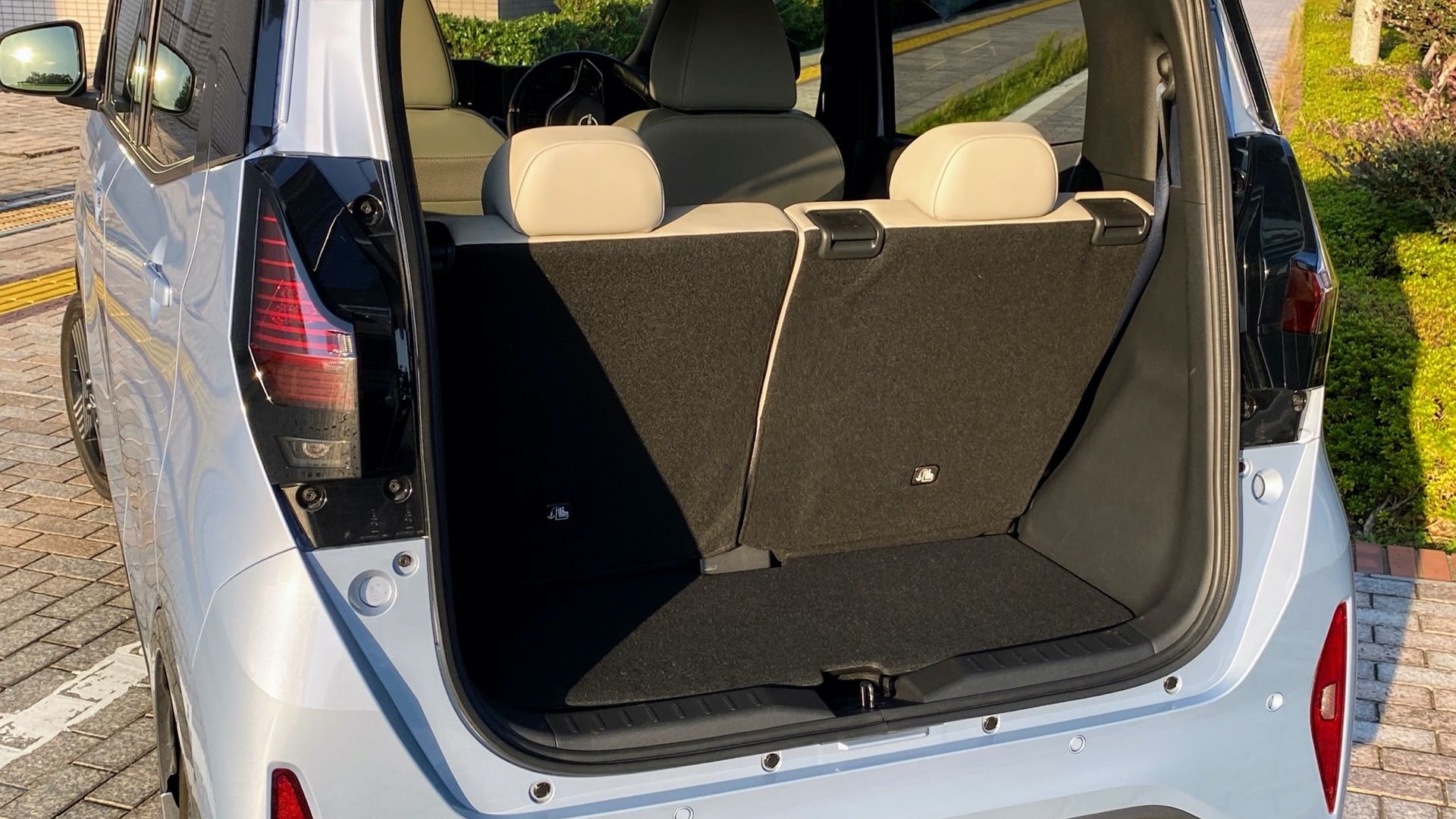Look anywhere around the world, and the biggest cities have some of the same issues, no matter what the country: space is tight, and access to high-power fast-charging is limited at best.
Applying that logic, the very tiny, four-passenger Nissan Sakura EV seems like the perfect formula to apply to an everyday driver for Seoul, London, and Amsterdam—all cities that have put the focus on-street Level 2 chargers located near where people live, supplemented with some fast-chargers at key hubs.
The game-changer, from an infrastructure-starved American perspective: The Sakura has a 20-kwh battery with lithium-ion chemistry and it's liquid-cooled. Nissan lists a 40-minute fast-charging time to 80%, but with its 3.5-kw onboard charger a full charge could be had in less than five hours on 240 volts.
Heck, on a standard 15-amp, 120-volt American garage socket, plugging in overnight is probably enough for a full charge for the Sakura, or close to it. And that's good for a 112-mile range in the global WLTP cycle.
Japan faces some of the same issues with charging access. And considering the charging realities it’s not so surprising that the Sakura is the country’s bestselling electric car.
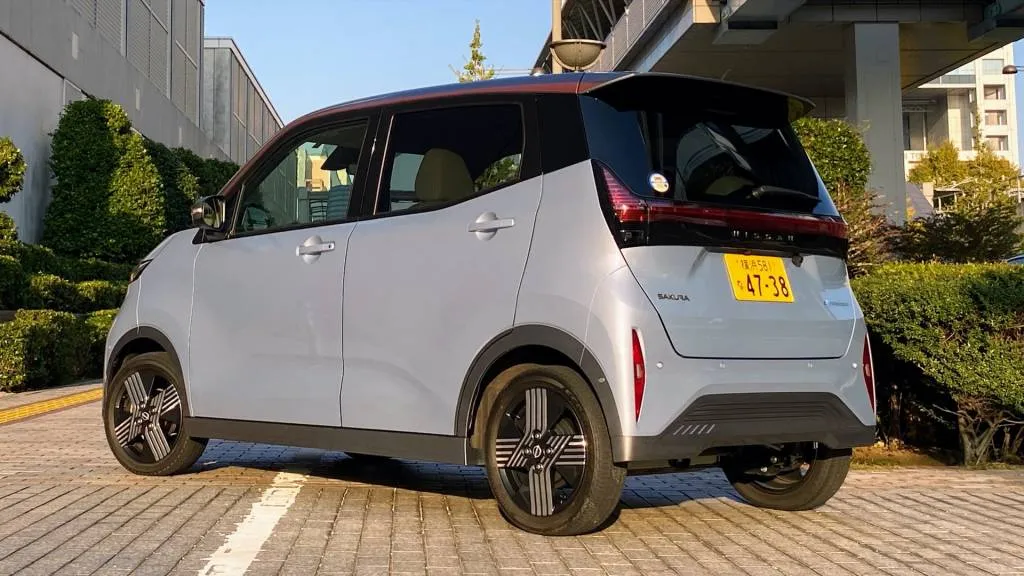
2024 Nissan Sakura EV - Tokyo
“That’s one of the reasons why Sakura is very successful—because you don’t need a high-powered charger to charge in your home,” Pierre Loing, Nissan’s VP for product strategy and planning, said at a Q&A session weeks ago at the Tokyo auto show.
In a drive of the Sakura during the show, Green Car Reports found that the Sakura served as a reminder that small EVs for the big city make a whole lot of sense on our side of the ocean, too—if only America would give them another chance.
The Sakura, which went on sale about a year ago, applies Nissan’s EV expertise from the Nissan Leaf and, more recently, the Ariya, to the Japanese kei-car mold. Kei cars are shaped by regulations—effectively prioritizing passenger space in a tiny footprint, and giving buyers various tax-and-fee advantages for driving a vehicle that takes up less space.
Kei cars tend to cost less up front, and the Sakura is no exception. It starts at the equivalent of about $15,000, and the fully loaded version I drove still landed under $20,000.

2024 Nissan Sakura EV - Tokyo
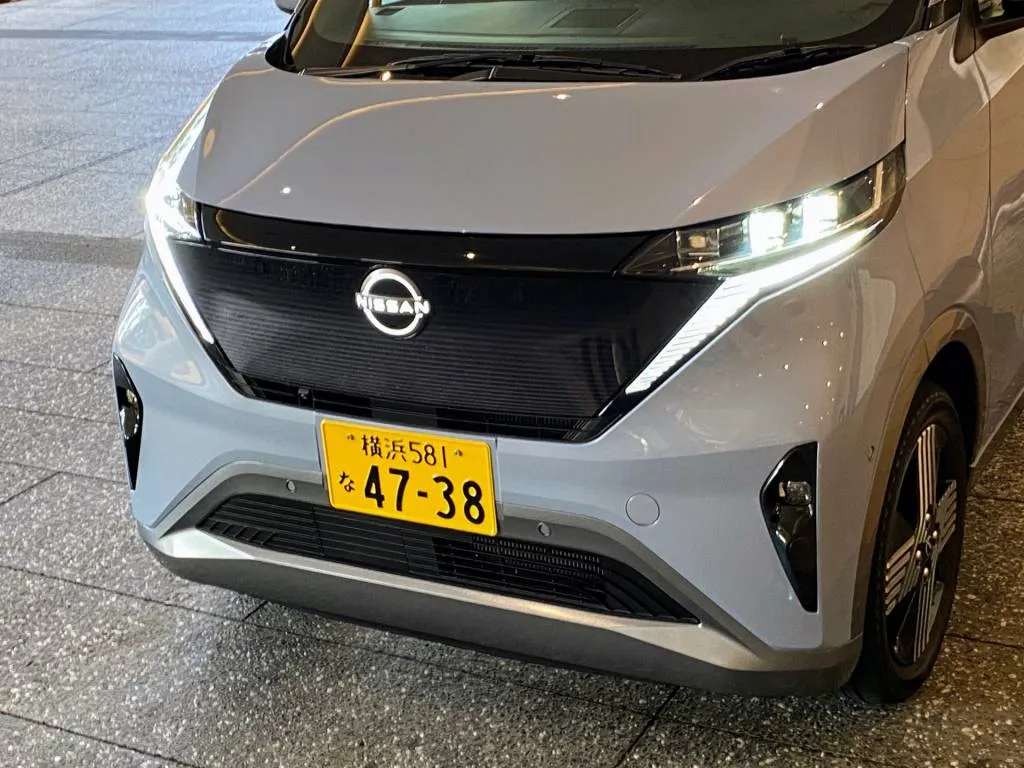
2024 Nissan Sakura EV - Tokyo
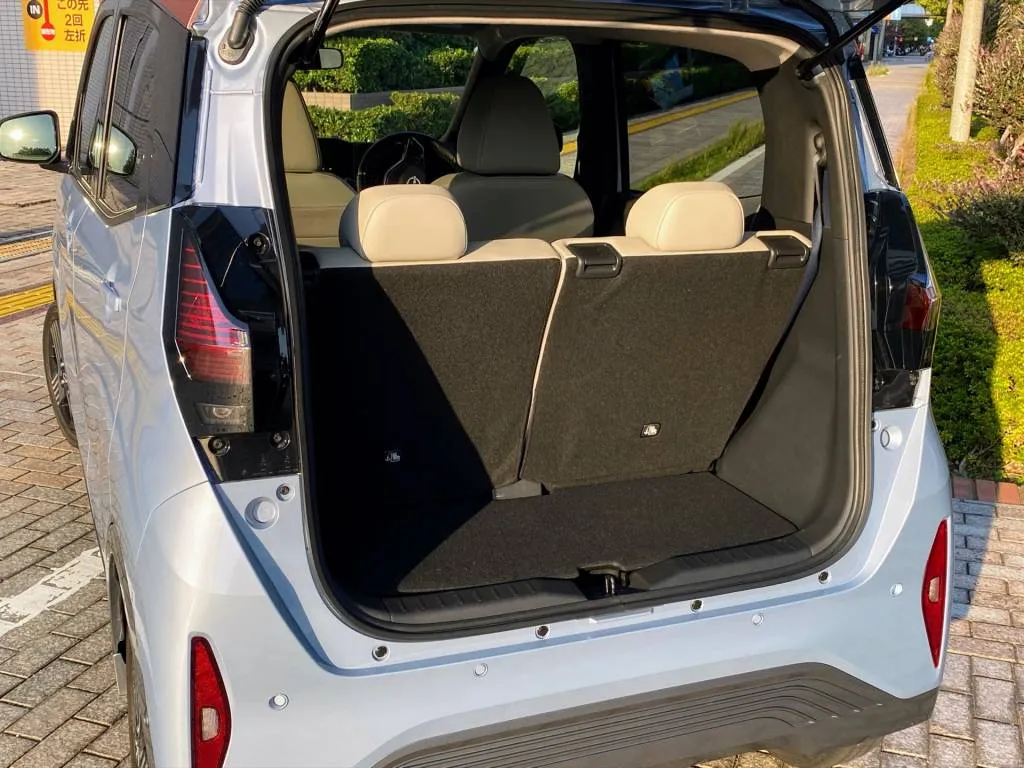
2024 Nissan Sakura EV - Tokyo
At just 133.7 inches long, 58.1 inches wide, and 65.2 inches tall, and riding on a 98.2-inch wheelbase, the Sakura has a form that’s about as foreign to Americans as that of the Cybertruck. To get there, start with van-like proportions, scaled way down, but keep the height as tall as modern crossovers while measuring far narrower.
To put it in perspective, height aside, the Sakura is about 10 inches shorter than either the two-door 2013-2019 Fiat 500e of the previous generation, or the closest all-electric offering for the U.S. market—the 2013-2016 Chevrolet Spark EV. While the Spark EV is long gone, a gasoline version of the Spark had been sold in the U.S. market through 2022, and a 2024 Fiat 500e that’s about the same length is on the way soon, starting at $34,095.
The Sakura has front-wheel drive, with a permanent-magnet electric motor delivering 63 hp and 144 lb-ft of torque. It rides on a front-strut, rear three-link layout, with front vented disc and rear drum brakes.
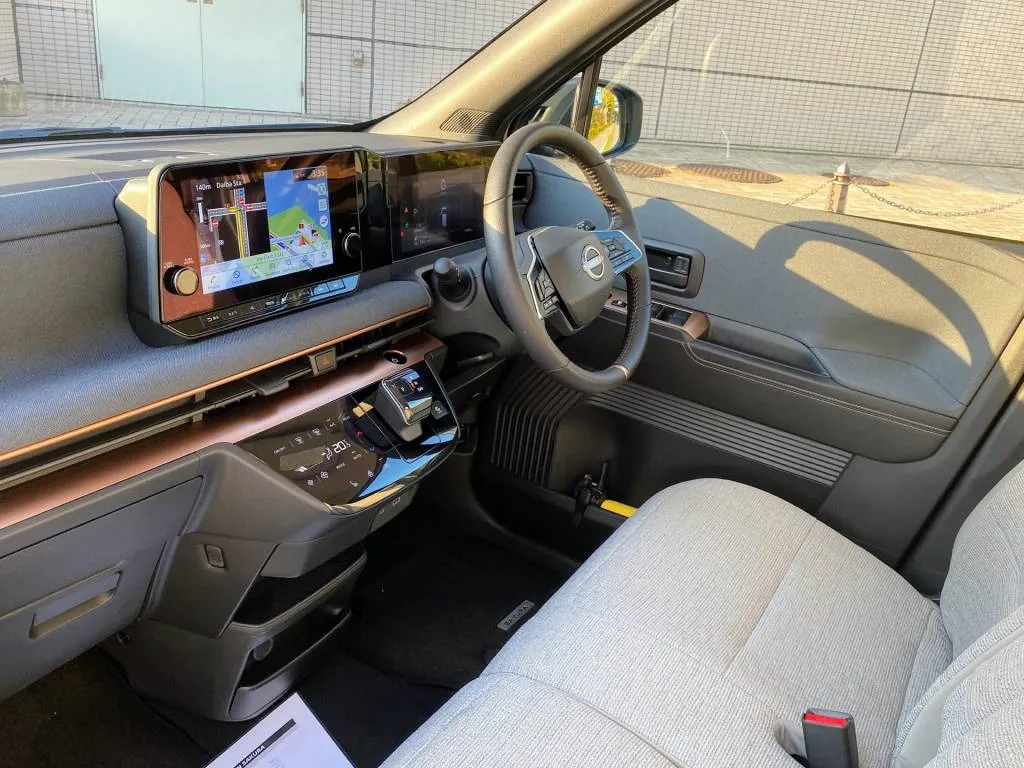
2024 Nissan Sakura EV - Tokyo
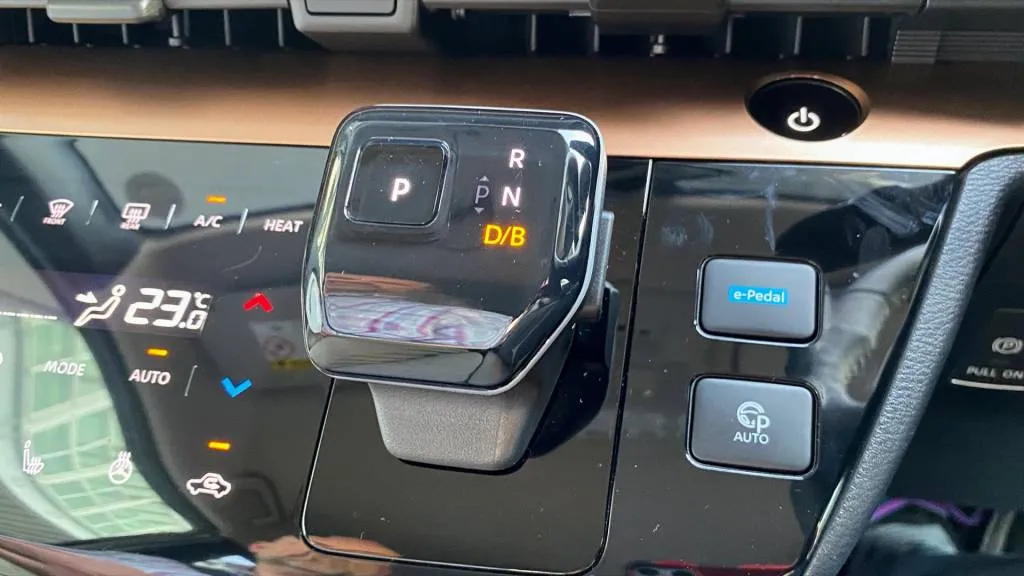
2024 Nissan Sakura EV - Tokyo
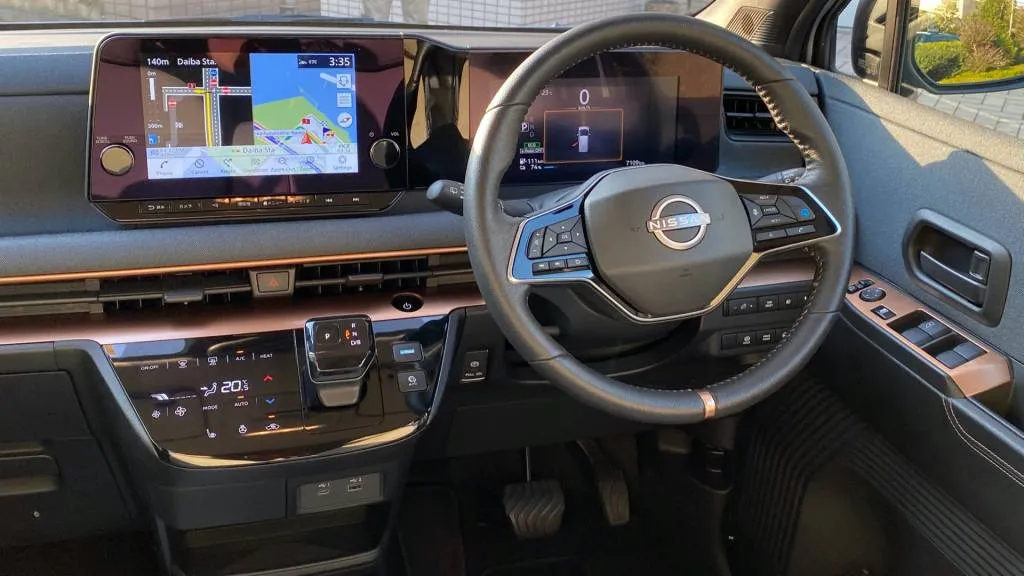
2024 Nissan Sakura EV - Tokyo
From the driver’s seat, the interface feels very familiar, with a choice between D (Drive), B (more regenerative braking), and an e-Pedal mode (much more regenerative braking). I was surprised and delighted to find comforts like supportive seat cushions, heated seats, a heated steering wheel, and automatic climate control. There’s even a version of Nissan’s ProPilot assisted-driving system. Yes, this is a world away from the no-frills Ford Festiva I once drove (just seven inches longer than the Sakura).
It’s what’s inside that’s verging on miraculous. Somehow the Sakura has space for four adults, with easy entry and exit. I felt far more at ease in the back seat of the Sakura than I did in the back seat of a Chevy Tahoe the following week.
And at a long-legged 6-foot-6, I’m far from typical Japanese proportions, yet I found I could comfortably sit behind one of myself.
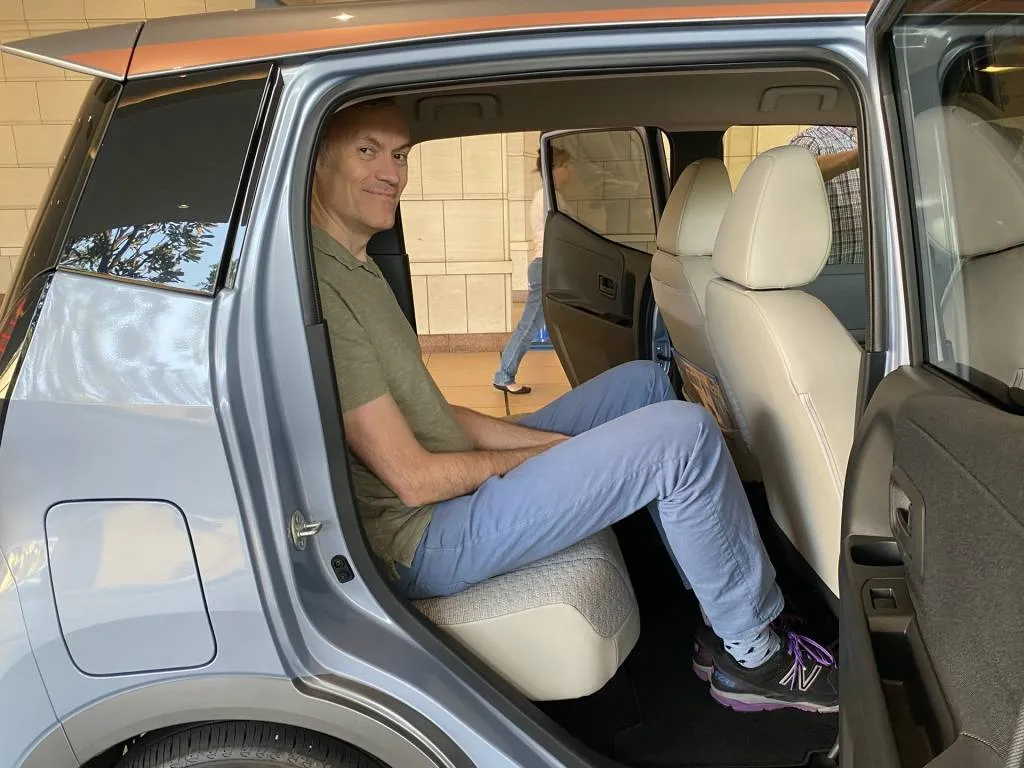
2024 Nissan Sakura EV - Tokyo
If you haven’t driven a kei car, the feel of the rack-and-pinion steering system and how it contributes to the experience might be your first surprise here. Its ratio is long and precise, and it helps give the car an assured feeling that counters concern at first glance that it’s tall and tipsy. But the Sakura’s low battery mass adds more, with the steering tuning and pack bringing an especially low planted impression that’s definitely different from other gasoline-powered kei cars I’ve driven.
Thinking of the powertrain only, the Sakura feels a lot like the first-generation Leaf behind the wheel (trust me, we still have one in the household). It doesn’t have the low-speed punch of the current Leaf, and even the strongest e-Pedal mode is a little more restrained, but a long accelerator-pedal travel gives you lots of control, while brake blending is better than that of many other luxury-brand models.
Body-wide, there’s not much lift, squat, and nosedive, as we car-testers say, although one quick right-left-right maneuver was enough to tell you that there’s plenty of softness and body lean in abrupt maneuvers—and skinny 155/65R14 tires—to discourage the possibility. It’s governed to a top speed of 81 mph, but my city loop, between stoplights in a business area, didn’t get much past 40 mph.
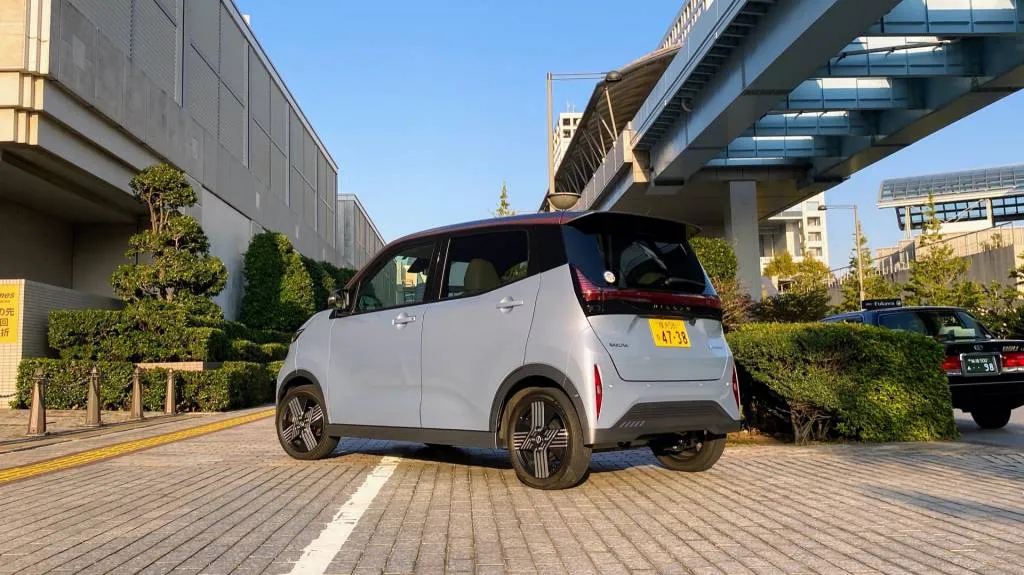
2024 Nissan Sakura EV - Tokyo
After getting out and stepping back, it occurred to me that the tires plus the Sakura’s curb weight of 2,376 pounds add up to what Americans widely drove as compact cars from the 1980s and ‘90s—albeit with a bigger footprint.
Can Americans get past their preconceptions—and our very different safety concerns? If we can get past the focus on super-sized electric pickups and gigantic three-row electric SUVs, we might find that keeping EVs charged up for the daily drive might be so much easier, if only we’d find a way to look a little smaller.

